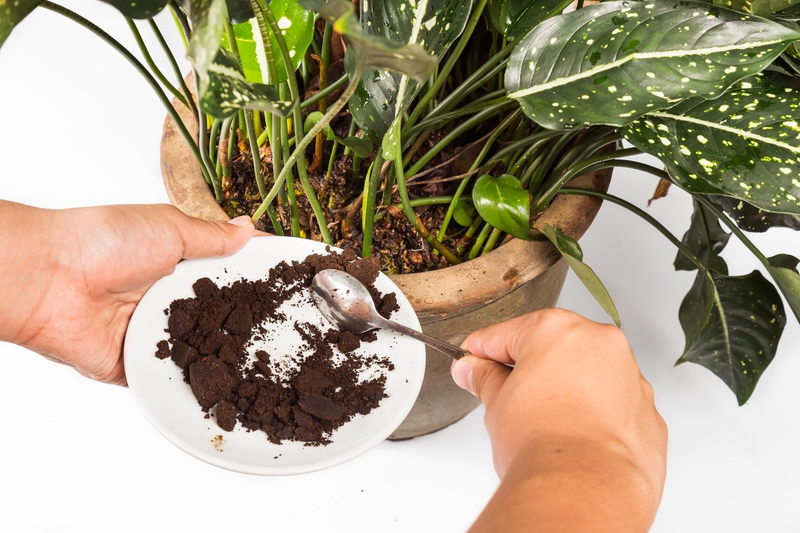Strengthen Your Garden's Defense Against Unforgiving Weather Patterns
Posted on 23/09/2025
Strengthen Your Garden's Defense Against Unforgiving Weather Patterns
Gardening is a rewarding pastime, but it often comes with unpredictable challenges, especially when extreme weather patterns threaten the health and beauty of your landscape. Whether you face harsh sun, torrential rains, biting winds, or unexpected frosts, preparing your garden for such events is crucial. In this comprehensive guide, we'll explore tactics, tips, and practical solutions to help you strengthen your garden's defense against unforgiving weather patterns and ensure your plants not only survive but thrive through adversity.
Understanding the Impact of Harsh Weather on Your Garden
Before you can fortify your garden, it's important to understand how different weather extremes can affect your plants and soil. The following conditions are common threats:
- Drought and extreme heat can stress plants, cause wilting, and reduce yield.
- Heavy rainfall may lead to waterlogging, root rot, and nutrient leaching.
- Strong winds can damage stems, leaves, and even uproot young plants.
- Sudden temperature drops and frosts can kill tender plants and disrupt growth cycles.
- Hail storms might shred leaves and break branches.
With weather unpredictability on the rise due to climate change, it's vital to implement a solid strategy to shield your garden from these challenges.

Key Strategies to Strengthen Your Garden's Weather Resilience
1. Assess Your Local Weather Risks
Every location has unique weather patterns. Start by researching your local climate, average rainfall, wind speeds, temperature extremes, and frost dates. Knowing these details will help you choose the best defensive measures for your garden. Many gardening apps and extension services offer localized weather data and recommendations.
2. Choose the Right Plants for Your Climate
Plant selection is half the battle in building a resilient garden. Native and climate-adapted plants are naturally more tolerant to your area's weather conditions.
- Look for drought-tolerant species if your region is hot and dry.
- Opt for flood-resistant and deep-rooted plants in rain-prone areas.
- Choose wind-resistant shrubs and trees for coastal or open locations.
- Plant cold-hardy varieties in regions that experience regular frosts.
Incorporating diversity in plant selection not only beautifies your garden but also creates a buffer against disease, pests, and weather extremes.
3. Improve Soil Structure and Health
Healthy soil lies at the heart of a resilient garden. Well-structured soil enables roots to access water while draining excess moisture, reducing the harmful impact of both drought and flood.
Tips for optimizing soil health:- Add organic matter such as compost or well-rotted manure to improve water retention and drainage.
- Practice mulching to insulate roots against temperature swings, retain soil moisture, and suppress weeds.
- Employ cover crops like clover or vetch during the off-season to prevent erosion and replenish nutrients.
- Check your soil pH and make adjustments if necessary to ensure optimal plant health.
Building Physical Barriers and Structures
4. Using Windbreaks and Shelterbelts
Strong winds can be among the most destructive forces in a garden, causing physical damage and increasing evaporation rates. Windbreaks act as shields, reducing wind speed and protecting vulnerable plants.
- Hedges and dense shrubs are natural windbreaks. Plant them along the perimeter of your garden.
- For immediate results, install fencing or trellis panels where needed.
- Use strategically placed trees to deflect winds, but make sure they are suited to your climate.
5. Raised Beds and Mounded Rows
Elevating your planting areas is an effective solution for gardens susceptible to flooding or poor drainage.
- Construct raised garden beds with quality soil to enhance drainage and provide better root aeration.
- Use mounded rows for crops that dislike "wet feet," reducing the risk of root diseases.
6. Row Covers, Shade Cloths, and Cloches
Protect tender plants from sudden frosts, blistering sun, or pounding rain by using physical covers:
- Row covers and horticultural fleece provide a lightweight barrier against cold and wind.
- Shade cloths help prevent sun scorch during heatwaves.
- Cloche and cold frames extend the growing season and protect plants from unpredictable weather.
Water Management Practices for Extreme Conditions
7. Smart Irrigation Techniques
Efficient watering is key to a weatherproof garden. Both drought and downpours demand a thoughtful approach:
- Install drip irrigation systems or soaker hoses to deliver water precisely where it's needed, minimizing evapotranspiration and runoff.
- Water plants in the early morning or late evening to reduce evaporation during hot weather.
- Use mulch to keep soil moisture levels steady and roots cool.
8. Rainwater Harvesting and Drainage Solutions
Take advantage of rainy spells and guard against excess water:
- Set up rain barrels or cisterns to collect water for use during droughts.
- Install French drains or gravel-filled swales to redirect excess water away from garden beds.
- Grade your landscape to ensure proper water flow and to prevent puddling.
Adapt Your Gardening Calendar to Weather Patterns
9. Flexible Planting and Harvesting Schedules
Unpredictable weather can make your usual gardening calendar obsolete. By observing the weather and using season extension tools, you can maximize your chances of success:
- Start seeds indoors or in cold frames to get a head start before the official frost-free date.
- Succession planting allows you to recover quickly from crop losses and make the most of good weather windows.
- Keep an eye on long-range weather forecasts and adjust your planting or harvesting times accordingly.
10. Emergency Weather Response Plan for Your Garden
Have a plan in place so you can act quickly when severe conditions strike:
- Monitor local weather advisories for frost, heatwaves, or storms.
- Keep protective materials (fleece, mulch, stakes, tarps) handy for rapid deployment.
- Stake tall plants and trellises ahead of high winds.
- Harvest mature produce before hail or storms can damage it.
Increase Your Garden's Biodiversity to Boost Resilience
Nature provides its own resilience mechanisms. By fostering a biodiverse garden, you encourage beneficial insects, birds, and microorganisms that support plant health and speed recovery from setbacks.
- Interplant flowers and herbs to attract pollinators and pest predators.
- Practice crop rotation and intercropping to decrease disease and pest pressure.
- Allow some native plants and wild areas to develop, providing habitat and shelter.
Embrace Sustainable Gardening Practices for Long-Term Protection
Soil Conservation and Erosion Control
Soil is precious. Prevent erosion and maintain structure with these techniques:
- Mulch generously to shield bare soil from heavy rains.
- Build terraces or retaining walls on slopes to limit runoff.
- Plant groundcovers and deep-rooted perennials on vulnerable slopes.
Composting and Organic Fertilization
Healthy soil is better able to cope with weather extremes. Organic amendments boost soil fertility, water retention, and structure.
- Compost kitchen and garden waste for a nutrient-rich soil additive.
- Use aged manure, worm castings, or leaf mold to build organic matter.

Garden Technology: Enhancing Weather Resilience
Modern gardening is increasingly technological. From weather-tracking apps to automated irrigation, there are tools designed to help you defend your garden against hostile weather patterns more efficiently.
- Soil moister sensors to avoid over- or under-watering during uncertain spells.
- Automatic weather stations that alert you to approaching storms or temperature shifts.
- Remote-controlled irrigation systems for on-the-go management of water needs.
Final Thoughts: Cultivating a Weather-Resistant Garden
While we may not be able to control the weather, through strategic planning and a few well-placed investments, it is entirely possible to strengthen your garden's defenses against unforgiving weather patterns. By choosing resilient plants, building protective structures, implementing smart watering, and nurturing soil health, you create a garden that is not only beautiful but also robust in the face of adversity.
Remember, gardening is as much about patience and observation as it is about action. Each season offers lessons on how best to protect your green spaces from the elements and reminds us of the resilience found in nature - and in ourselves.
Take proactive steps today to shield your garden, and enjoy bountiful harvests and beautiful blooms no matter what the climate brings your way!



